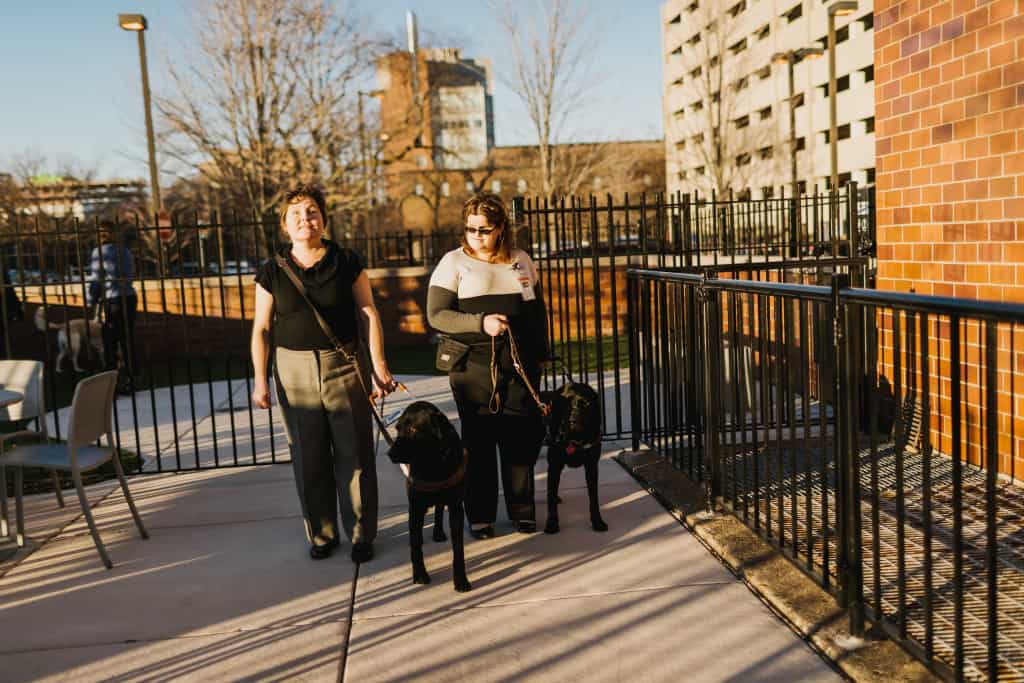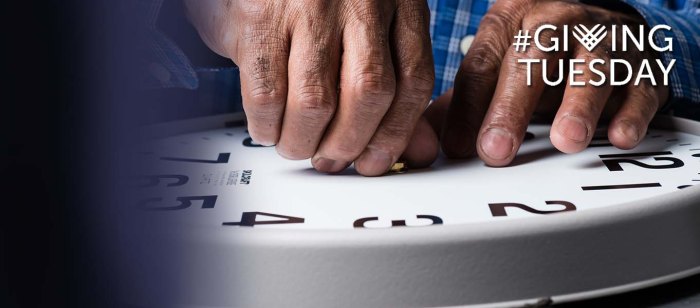This week’s guest commentary is written by Wayne Scace, a long-time dog guide user who is visually impaired. Wayne comments on two recent experiences he faced while out in the street with his guide dog, Harley.

Recently, I experienced two incidents within twenty-four hours that interfered with my guide dog and ultimately endangered our lives. During the first incident, I was making my way home walking along Randolph Street towards Millennium Station in downtown Chicago to catch a Metra train. Suddenly, I heard someone crouch down while calling ‘puppy, puppy, puppy!’ at my guide dog in an upbeat way. The person then proceeded to take a flash photo of Harley (I am not totally blind, so I could see the flash.)
Had Harley become distracted, these actions could have endangered us. Furthermore, Harley’s vision could have become impaired temporarily by the flash. These actions were also an invasion of my privacy. If the individual had politely asked to take a photograph of Harley, I would have probably said yes. However, the person’s poor judgement took away my choice, my privacy, and endangered our team.
The second incident happened the next day while Harley and I were walking along Wood Street towards Polk to get to the El station. As we were approaching the intersection, there was an open grassy area to my right. Just as we began walking along the grass, Harley alerted me to the presence of another dog with his body language. I then heard a shout, and about 10 seconds later someone’s off-leash dog came charging at Harley and me. For a guide dog team, any rapidly approaching off-leash dog is considered a threat until proven otherwise.
When the owner finally caught up to us, he said that his dog was really friendly. I asked him where the leash was, and he waved it at me and responded that he was just playing ball with the dog in the park. I explained to him that doing so in an unsecured area was dangerous because his dog could have been injured or killed. Not to mention that Harley or I could have also been hurt. This incident was extremely dangerous, because while I was focusing on moving to keep myself between Harley and the other dog, Harley was not able to guide me. He did not lunge, or vocalize, but because I had him tucked tight to my left leg, Harley could not do his job. Besides endangering his dog and mine, the owner was in violation of the leash ordinance in Chicago.
Both of these incidents highlight why it is extremely important not to distract service dogs. Many people have tried distracting my guide dogs over the last 17 years, but these incidents are, by far, the most egregious!
Too many members of the public either do not know, or simply choose to ignore that distracting the cute service dog could endanger the lives of the team. A medical alert dog that is distracted by someone trying to pet it could miss a critical warning and the owner could die. A distracted guide dog could walk its handler out in front of a car, or into an obstacle. A wheelchair user could have their chair overturned by someone distracting their service animal. Off-leash dogs have injured service animals so badly that they had to retire. Other times, service animals have been killed, or had to be euthanized due to the severe injuries suffered from an off-leash dog. In some states it is a criminal violation to interfere with the work of a service animal team.
Bottom line, these highly trained dogs are out in public to work, not to provide people with entertainment. Service animal owners simply want to go about our day like everyone else. Fortunately, there was not a negative outcome from these incidents, except the sour taste left in my mouth.
Again, please, do not distract the service dog you encounter out in the street! We know he/she is cute, but that does not give you the right to take their photograph, or let your off-leash dog come charging up to us.






